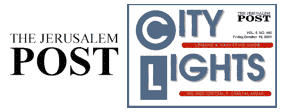|

Reviews and Articles

-
2001-02 National Jewish Book Awards
Finalist
…A meticulously painted canvas of life in the 18th and 19th
centuries for southwestern Germany’s rural Jews…. She does
an impressive and scholarly job of assembling original
sources using remarkably preserved records from both German
and Jewish archives of small towns and villages. She expands
a narrowly focused family history into an interesting record
of a resourceful and resilient people who make lives, create
families and build communities in spite of constant
discriminatory practices, malice and capriciousness of the
churches and the ruling princes.
… Jewish
Book Council, October 30, 2002.

-
…[M]ay be
unique in highlighting the experiences of rural Jews in
18th- and 19th-century Germany. …[T]his absorbing study
weaves her discoveries about her … ancestors' experiences
with the larger history…. …[E]nhanced by dozens of …
illustrations.
… Publishers Weekly, July 23, 2001
-
Braiding
together research of documents, art, and stories, she
describes the Jewish experience of community, family life,
riots, civil rights struggles, and emigration. Appendices
describe traditional Jewish life in the villages and small
towns, and provide a blueprint for researchers.
… Reference & Research Book News, November 1, 2001

-
This family
material serves as the core of the narrative; but taken as
paradigmatic for rural south German-Jewish life, the
family’s story is integrated into the book’s larger
historical account. Punctuated with evocative pictures….It
depicts well the precarious nature of Württemberg Jews’
every-changing socioeconomic position….
… B. Kraut, CUNY Queens College, Choice: Current Reviews
for Academic Libraries, March 2002

-
A surprisingly
thorough and scholarly discussion of the many historical
forces and events.... …An intriguing blend of personal
genealogy and historical scholarship. …The multitude of
photographs, documents and charts adds immeasurably to the
text, as does the wide variety of original source material
that the author consulted.
… Bill Gladstone, “Book Reviews,”
Avotaynu, Fall 2002

-
The author
possesses the double blessing of an impressive command of
her subject and a clear writing style,… managing,
ultimately, to reconstruct a vivid picture of a vanished
milieu.
— Bill Gladstone, “Genealogical quest sends author on an
odyssey,”
The Canadian Jewish News, September 5, 2002

-
…A unique
example of how a simple genealogical research project
developed into the social history of a lost community and
culture.
… Schelly Talalay
Dardashti,Book Reivew,
Stammbaum: The Journal Of German-Jewish Genealogical
Research, Published by the Leo Baeck Institute, Summer 2002

-
“He thought
education, and in particular reading, were so important,”
Emily Rose, a distant relative of Bernhard Moos, during a
talk with pupils at Bernhard Moos Elementary School.
… Jon Anderson, “What’s
in a Name? Pupils get Lesson,” City Watch,
The Chicago Tribune, May 24, 2002

-
Some
genealogists look merely for names and dates, others take
family facts and incorporate them into the milieu in which
their ancestors lived: socioeconomic, political, historical
and geographical. Emily Rose has done just this in her
meticulously researched and detailed look at the lost
culture of Jews in rural southern Germany.
… Schelly Talalay
Dardashti “It’s All Relative:
More than a family,“
City Lights,
The Jerusalem Post, October 15, 2001
-
This is a
remarkably well-researched piece of work. Unlike virtually
any other popular writer on the subject, she has a keen
grasp of modern social history methodology and has a keen
understanding of the nature of South German rural Jewry.
Rose is skilled in weaving together her family saga with the
more general history of the community. What is unique about
this book is that it deals in a historical way with the
rural Jews in South Germany, a subject little known outside
the scholarly world.
… Dr. Steven Lowenstein, Isadore Levine Professor of Jewish
History, University of Judaism, Los Angeles, CA
-
Ms. Rose's
book is a fascinating and important one. Both the work she
has done, and the conclusions she has reached are
significant and very informative. The research is incredibly
thorough. The story is both interesting and complex, and her
successful attempt to link it to the broader history of the
shifting status and development of the rural Jewish
population in Württemberg gives it a major import that goes
far beyond the specific family history.
… Dr. Paul Helmreich, Professor of History, Emeritus, and
College Historian, Wheaton College, MA

-
A
distinguished new addition to the growing historiography of
the Jews of rural Germany. The struggle of survival of rural
Jewry is placed in the context of this larger German
picture. Emily Rose has made a true and faithful book out of
the lives of her forbears, a solid contribution to our
understanding and a respectful tribute to the trials and
triumphs of the Jewish past.
…
— Herbert Rosenbaum, “History Unearthed,” Aufbau, New
York- Berlin, May 16, 2002
-
-
What resulted
from her research and love for her heritage was a 370-page
book that reads both like a historical novel and a history
text. A "Roots" saga it is not; nor is her book a dry
genealogical listing. Rose entwines the social history with
data unique to her family.
— Lauri Garbo,
Naples Daily News, March 9, 2002. (full article at
www.naplesnews.com)
-
“It is the
story of our family, but it’s a history book. People are
interested in history, and they want to read about real
people,” Emily Rose.
— “Village Life,” Cathy Chestnut, Cameos, Naples
Illustrated, April 2002

-
Those of us
who have attempted to trace our roots know the joy of
discovering our unknown ancestors and extending our family
trees back in time. Emily Rose has gone down this path with
extraordinary results…. [B]ecame, in effect, a history of
rural Jews in eighteenth and nineteenth century southern
Germany….
— Bernie Banet, Wastenaw Jewish News [Ann Arbor,
Michigan], November 2001
-
Touches on
the Romantic Road. Portraits of Our Past is recommended
reading.
— “The Romantic Road,” Phyllis Ellen Funke,
Hadassah Magazine June/July 2002
-
[Berlitz’s]
origins have been shrouded in ambiguity and legend. Rose
provided Berlitz International with the results of her
thorough research.
— ”Berlitz 150th Anniversary. Origins in Dispute,”
The Jewish Press, New York, April 5, 2002
-
“It is not a
Holocaust era discussion. It’s an upbeat story… I realized
that this story was something we didn’t know about; it had
not been written,” Emily Rose.
— Jerry Libonati, “German Jewish history
explored,” Library News,
South Florida Sun-Sentinel, April 4, 2002

-
Newly
discovered information reveals his true origins, although
Berlitz International refuses to accept new historical
evidence.
— “April 14, 2002 Marks the 150th Anniversary of
the Birth of the Founder of the Berlitz School of
Languages.”
Jewish Business Quarterly, Spring 2002
-
…So beautiful and instructive…. Her work makes an important
contribution, and I hope that it will find a large
readership…. I admire her courage to even start this
undertaking, having been unfamiliar with the German
language, and then to study thousands of old handwritten
documents and books.
How she sorted out all this information out and
produced such a readable and informative work is amazing to
me…. It brought back so many memories of my youth having had
grandparents and uncles in villages… whose life,
especially that of the grandparents, must have been much as
she describes it….
—
Erwin Taenzer, refugee, retired engineer; son of a rabbi and
brother of a lawyer who were both important early 20th century
German-Jewish historians
-
-
-
-
-
|
|